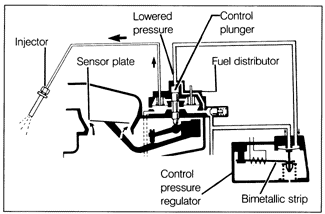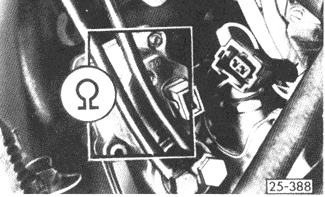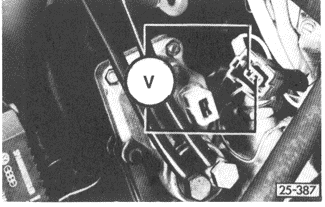Testing and Replacing Control Pressure RegulatorWhen the engine is cold, a bimetallic strip holds the regulator wide open to minimize control pressure and provide the richest mixture. When the engine is started and running, electric current warms a heating element that surrounds the bimetallic strip. This in turn slowly closes the regulator's valve, increases control pressure, and leans the fuel mixture. When the regulator is fully warmed, the control pressure reaches a fixed value. See in Fig. 5-10.

To test the heating element of the control pressure regulator, disconnect the harness connector and measure the resistance across the regulator terminals, as shown in Fig. 5-11. If there is an open circuit (no continuity), the control pressure regulator is faulty and should be replaced.

Also check to see that the control pressure regulator heating element is receiving voltage. Disconnect the harness connector and ground the coil wire as described above to prevent the engine from starting. When the starter is actuated, there should be a minimum of 8 VDC across the harness connector, as shown in Fig. 5-12.

To replace the control pressure regulator, disconnect the fuel union bolts from the regulator, disconnect the electrical plug, and remove the mounting bolts that hold the control pressure regulator to the engine block. Use new sealing washers. Torque the larger fuel line union bolt and the two mounting bolts to 20 Nm (15 ft. lb.). Torque the smaller fuel line union bolt to 10 Nm (87 in. lb.).
|